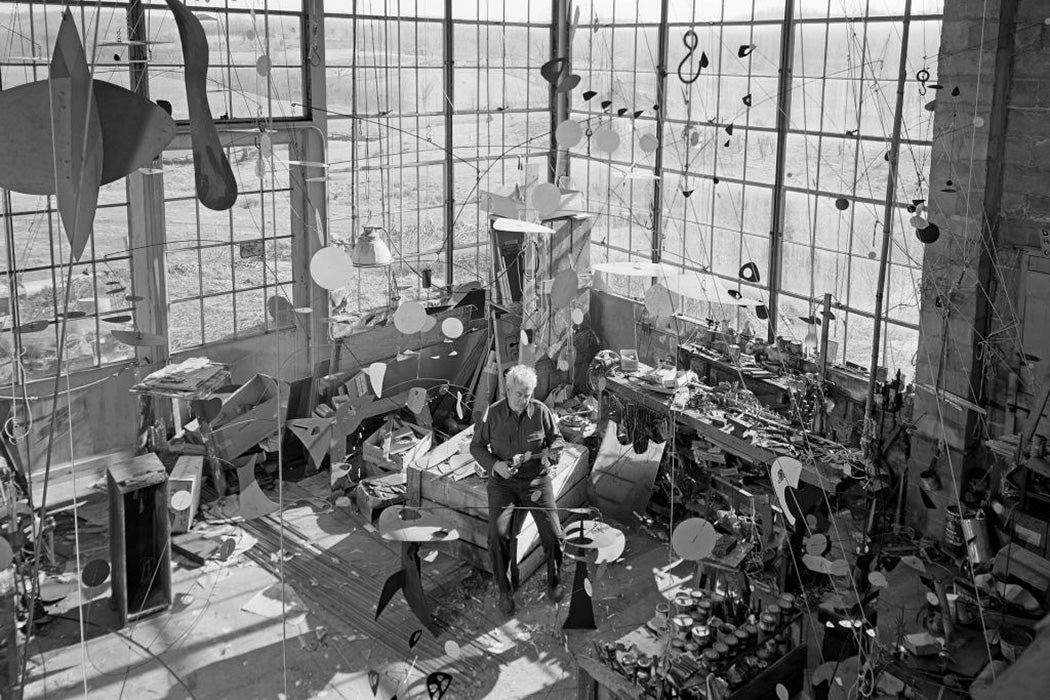American sculptor Alexander Calder was born on this day in 1898. Celebrated for his abstract kinetic sculptures and his monumental public sculptures, Calder, together with minimalist artists such as Richard Serra and Mark di Suvero, defined the aesthetic of the city plaza and museum terrace in the twentieth century.
On February 5, 1951, during a symposium on abstract art at New York’s Museum of Modern Art, Calder was asked to give his view on the proposition: “What Abstract Art Means to Me.” Here’s an excerpt from his speech. You can read and download the entire speech, as well as responses to the same prompt by George L. K. Morris, Willem de Kooning, Fritz Glarner, Robert Motherwell, and Start Davis, free of charge from JSTOR.
When I have used spheres and discs, I have intended that they should represent more than what they just are. More or less as the earth is a sphere, but also has some miles of gas about it, volcanoes upon it, and the moon making circles around it, and as the sun is a sphere—but also is a source of intense heat, the effect of which is felt at great distances. A ball of wood or a disc of metal is rather a dull object without this sense of something emanating from it.
When I use two circles of wire intersecting at right angles, this to me is a sphere—and when I use two or more sheets of metal cut into shapes and mounted at angles to each other, I feel that there is a solid form, perhaps concave, perhaps convex, filling in the dihedral angles between them. I do not have a definite idea of what this would be like, I merely sense it and occupy myself with the shapes one actually sees.
Then there is the idea of an object floating—not supported—the use of a very long thread, or a long arm in cantilever as a means of support seems to best approximate this freedom from the earth.
Thus what I produce is not precisely what I have in mind—but a sort of sketch, a man-made approximation.
That others grasp what I have in mind seems unessential, at least as long as they have something else in theirs.
Read the full article at the link in the Resources section below.







